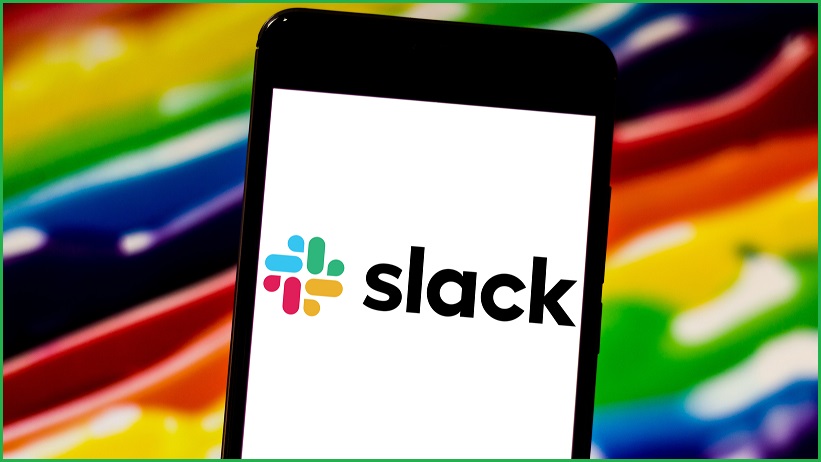Chasing the red-hot enterprise collaboration market, cloud-computing giant Amazon will combine its videoconferencing and cloud services with team-collaboration tools from Slack in a challenge to Microsoft’s dominance that will also help Amazon lock in a key client for the long term.
The partnership, which was billed by the companies as “the future of the enterprise workplace”, will link the Amazon Web Services (AWS) Chime videoconferencing platform with popular Slack tools, which help teams work together on projects no matter where people are located.
Slack will now substitute Chime for its own Slack Calls capability, which enables voice and video calls between members of project teams, and leverage AWS capabilities such as encryption key management, integration of AWS chatbot services into Slack, and more.
The deal will also shape Slack’s future development around Amazon’s more than 175 cloud-based services – which span the gamut of IT capabilities, from artificial intelligence (AI), and large-scale databases to security, mobile interfaces, blockchain, Internet of Things (IoT), game technology, and more.
Cloud industry prepares for post COVID-19 pivot
Vendors of collaboration tools are navigating the massive workforce changes that COVID-19 has wrought, with businesses working to reset their operational strategies with large numbers of employees expected to continue working from home even after the health crisis subsides.
Group videoconferencing tool Zoom – which this month announced that its annual revenue would nearly double on the back of soaring remote-work and remote-schooling usage – has become the poster-child for the collaboration movement, but staying relevant will require a much broader range of capabilities to support distributed working.
The AWS-Slack partnership has been positioned against Microsoft’s Teams tool, which has turned in strong results given its close links to that company’s dominant Office 365 – which was recently renamed as Microsoft 365, reflecting efforts to expand its scope, as AWS and Google have done, with myriad cloud services.
Teams passed Slack last July, when it noted having 13 million daily active users, and has subsequently watched daily user numbers surge to 20m (last November), 44m (this March), and 75m (May).
Catching Microsoft, as well as fighting off competition from Cisco’s Webex and Google’s Meet – which was released as a free version in late April to compete with Zoom and its ilk – ensure the Amazon-Slack collaboration will face robust competition for lucrative business contracts.
All are vying for a slice of a pie that will grow dramatically in coming years, with IDC predicting that companies that have “intelligent and collaborative work environments” will see 30 per cent lower staff turnover, 30 per cent higher productivity, and 30 per cent higher revenue per employee than their peers.
Seeing the bigger picture
Yet market share is just one of several goals for cloud-computing companies, which – just as shopping-centre landlords rely on big-name retailers as anchor tenants – are desperate to tie their fortunes to the success of popular collaboration companies.
Slack, for one, has been running on AWS since 2014 and its deal with Amazon is reportedly worth over $650m (US$425m) to the cloud provider through 2025.
This puts Slack in the company of blue-chip Internet firms that are already spending big with AWS – including Netflix (said to be spending $29m per month on AWS), Twitch ($23m), LinkedIn ($20m), Facebook ($17m), the BBC ($14m), and Twitter ($11m).
Such companies depend on AWS’s ability to scale their services up and down to meet fluctuating user demand – but as cloud-computing firms AWS, Microsoft and Google expand their menu of cloud services, partnerships with key customers have taken on a completely different dimension.
By getting Slack to commit to building its new features using AWS services – “to expand the ways we can help our customers innovate in the cloud,” AWS CEO Andy Jassy put it – AWS ensures that Slack will find it progressively harder to use competing services from its rivals.
This will provide long-term technological lock-in – and the significant revenue stream that comes with it – in a move that will be a crucial part of the business-software playbook for the post-COVID-19 environment.
Zoom, for one, has spread its risk by buying cloud services from AWS, Microsoft, and Oracle as well as its own services – but any of those vendors would welcome the chance to elbow out one or all of its competitors.
It’s a leading indicator of a pandemic that “is an immediate event that changes how we think and work at the most fundamental levels,” Gartner vice president analyst Mark McDonald recently noted while advising technology companies to “reset their product vision, strategy and plans to account for this new reality.”
“That must be the starting point for any response or action plan,” he said.









